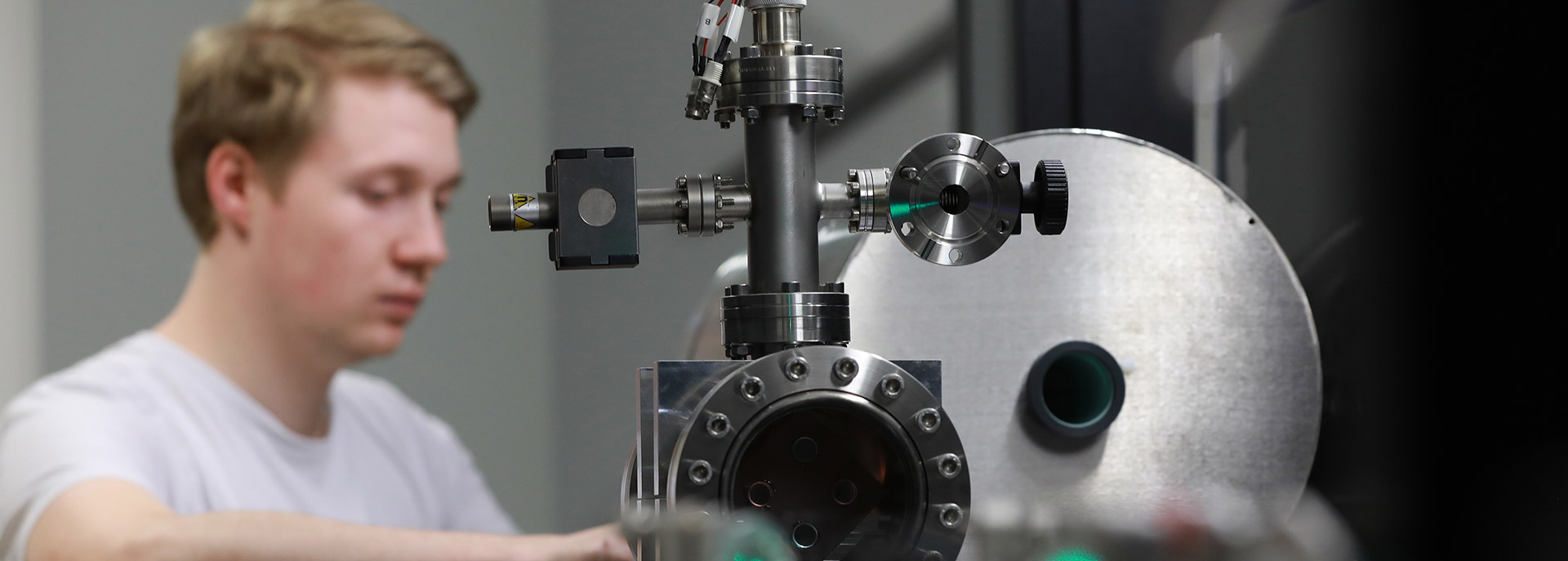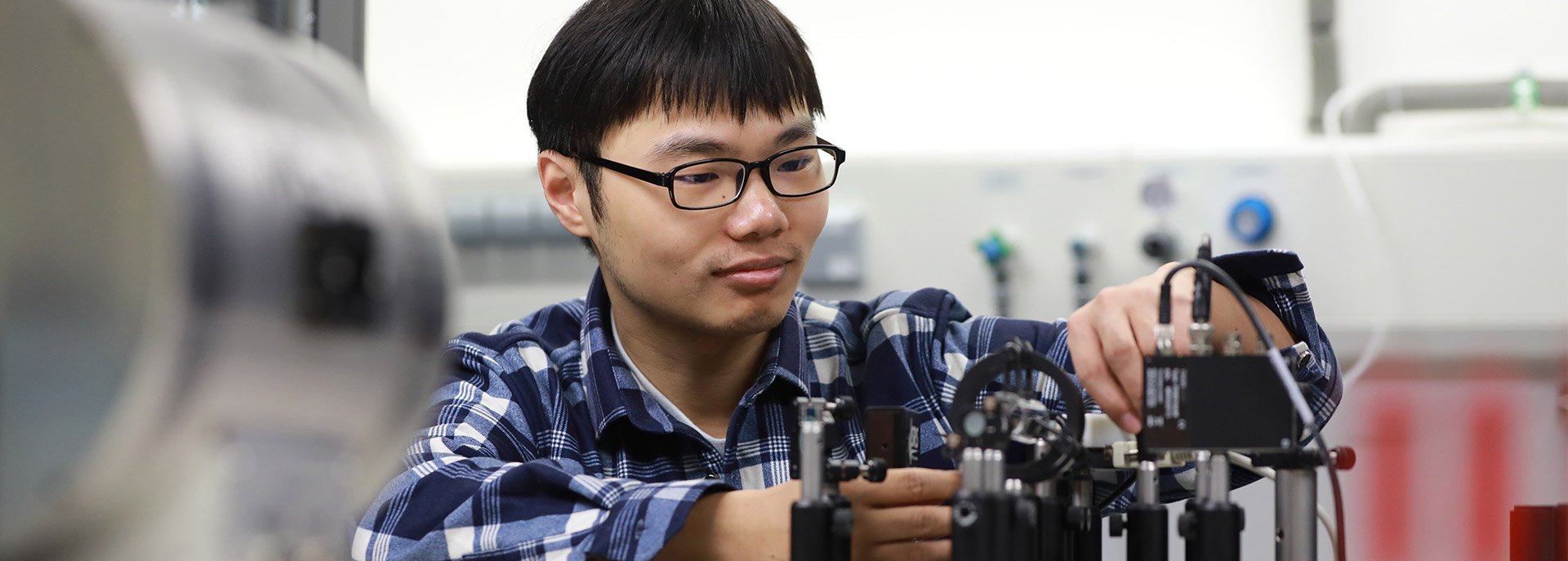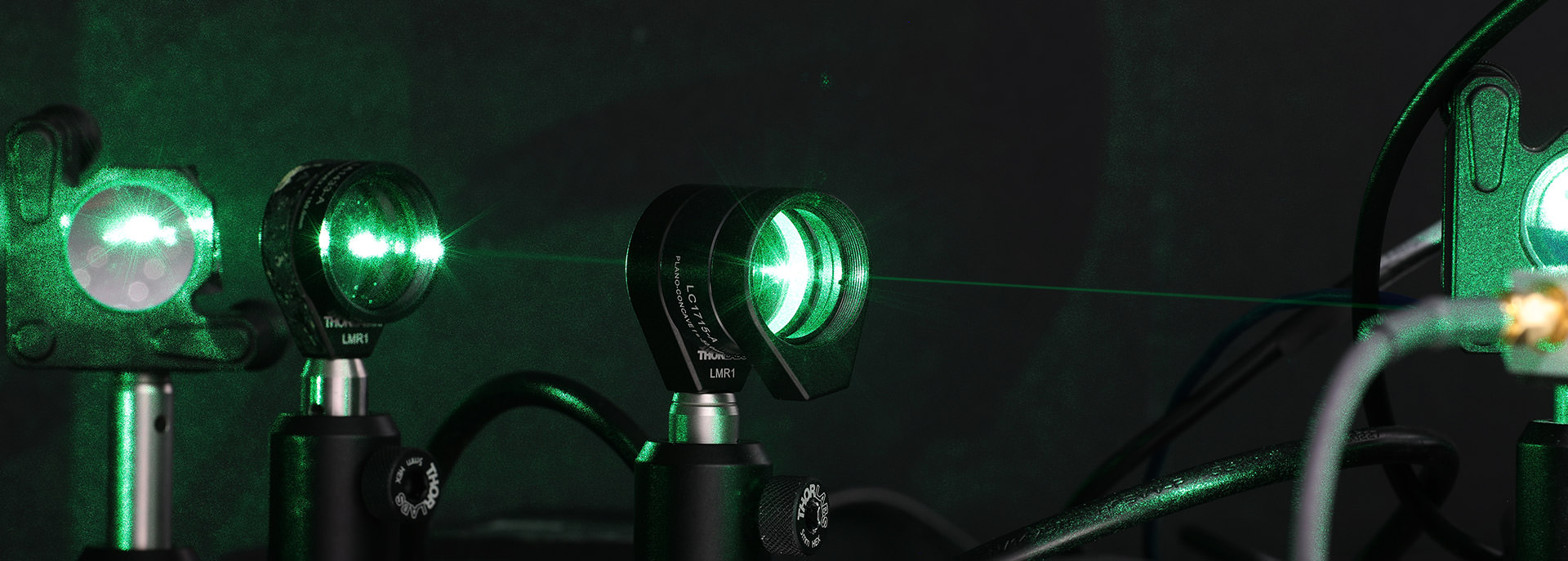Fundamental Physics with Atoms, Molecules, and Light
Section Matter-AntiMatter (MAM)
What is the enigmatic dark matter, of which there is about five times as much in the universe as the normal matter familiar to us? And why are planets, stars and galaxies made of matter, whereas antimatter has largely disappeared from the cosmos? These questions are among the fundamental problems of physics. With a wide range of activities, the MAM (Matter AntiMatter Asymmetry) section aims to experimentally examine which approaches point to a correct explanation of these phenomena.
Numerous astronomical observations suggest that dark matter actually exists: galaxies rotate much too fast for ordinary, visible matter to hold them together by gravity. Theorists therefore conclude that there are huge amounts of an unknown form of matter, which is responsible for the cohesion among the stars. However, what this non-luminous, i.e. dark matter is made of is still a mystery.
Among the candidates are WIMPs (Weakly Interacting Massive Particles) – relatively heavy particles that flit through space unnoticed by us. However, elaborate search campaigns with both particle accelerators and detectors installed deep in underground laboratories have so far been unsuccessful. A growing number of physicists therefore pin their hopes on another explanation: so-called axions could be behind dark matter – extremely light, hitherto hypothetical particles beyond the standard model.
Search for axions
These axions could also solve another problem – the problem of “strong CP violation”. The letters CP refer to an important symmetry in particle physics: if one changes the sign of the electric charge (C for charge) of a particle and replaces the particle at the same time by its spatial mirror image (P for parity), the resulting particle should be completely symmetrical, and its physical behavior should not differ from that of the initial particle. However, as early as the 1960s, physicists discovered that this symmetry was broken in some species of particles – the mirror image subtly differed from the original picture.
This CP violation, however, was found only in the weak interaction, but not in the strong interaction: so far, no experiment has yet observed that the strong interaction is violated. The reason is still not clear. The existence of the axion would offer a tentative explanation, thereby solving the problem of the strong CP violation.
At the Helmholtz Institute Mainz, the MAM section is advancing the search for axions with two experiments. CASPEr (Cosmic-Axion Spin-Precession Experiment) is based on nuclear magnetic resonance, much like an MR scanner in medicine. The idea is that a field associated with the axions would cause a kind of wobbling (precession) of the polarized nuclear spins in the experimental setup, which could be detected with sensitive sensors.
The second approach is the Global Network of Optical Magnetometers for Exotic Physics Searches, or GNOME for short. It consists of several synchronized atomic magnetometers distributed over the globe, integrated into highly effective shielding that protects the sensors from external fields such as the Earth’s magnetic field. Dark matter particles, however, should pass through this shielding unhindered, meaning that they could be registered by the magnetometers.
The challenge is that the expected signals are extremely weak, i.e. it is extremely difficult to separate them from the background noise. As in the search for gravitational waves, the researchers therefore rely on a global network of different sensors looking for correlations. According to the theory, the axions should not be distributed equally throughout the universe, but occur in denser and less dense “bubbles”. Should the Earth move through a bubble boundary, the sensors could register it, thus proving the existence of the axions. Alongside the MAM section, teams from Poland, Switzerland, the USA, China and South Korea are involved in the international search.
Matter and Antimatter Experiments
Another question in physics is: why do we observe much more matter than antimatter in the cosmos today? Actually, matter and antimatter should have annihilated each other shortly after the big bang – the universe today would consist exclusively of pure radiation. To shed light on this question, HIM researchers are participating in an experiment called GBAR at CERN in Geneva (Mainz GBAR contribution here). Using GBAR, they aim to find out whether antihydrogen is falling in the gravitational field of the Earth in the same way as conventional hydrogen – an experiment that is possible only with neutral atoms and not with charged particles, such as atomic nuclei.
The HIM researchers are also catching ions made of matter and of antimatter in traps to compare their properties using high-precision measurement techniques. They are also involved in the planning of new antimatter experiments at accelerators such as FAIR in Darmstadt and developing new experimental techniques and measuring instruments for this purpose.
Parity violation
In addition, the MAM section operates two experiments that analyze the effect of parity violation in atoms in detail: one based on ytterbium, the other using dysprosium atoms. The section develops novel highly sensitive magnetic sensors, based on atomic vapors and on diamond color centers, and applies them, among other things, to biophysical experiments. Moreover, the section works on NMR methods that operate in extremely weak or even with no magnetic fields, develops methods for the remote measurement of magnetic fields in the mesosphere, analyzes chiral molecules and boasts a vigorous theory group.
Prof. Dr. Dmitry Budker

Helmholtz Institute Mainz
Staudingerweg 18
D-55128 Mainz
Room 01-161
Phone: +49 6131 39-29630
E-Mail: budker(at)uni-mainz.de



